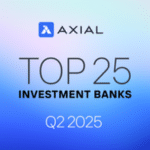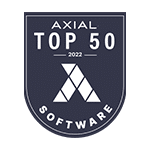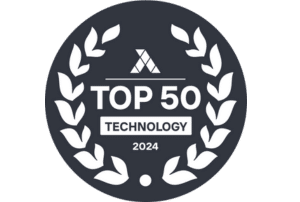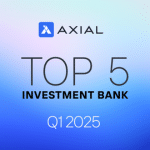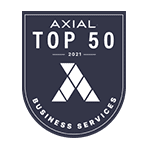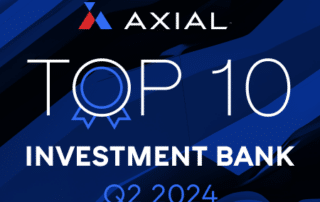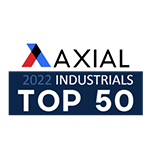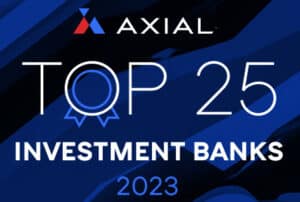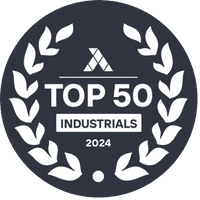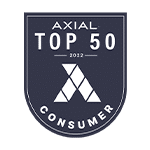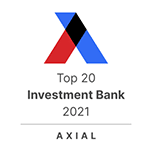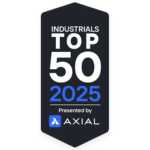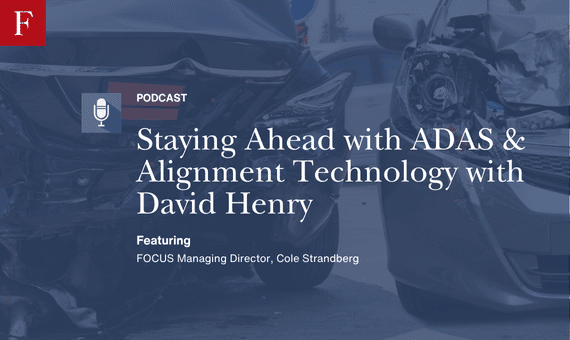
Staying Ahead with ADAS & Alignment Technology with David Henry
On this week’s episode, Cole Strandberg chats with David Henry, Senior Sales Development Manager at Hunter Engineering. David brings a wealth of experience helping collision centers become more productive, more precise, and ultimately more profitable. They talk about how ADAS and alignment equipment play a critical role in a modern repair plan, where shops can fall short when it comes to calibration, and what smart operators are doing to stay ahead.
Listen and Follow The Collision Vision.
Cole Strandberg: Looking forward to an awesome conversation. You and I are in our respective studios on a beautiful Friday. So happy to start to wind down the week on a high note. One who I introduced you a little bit at the top of the show. Would love to learn about you and your background in your own words as well.
David Henry: Yeah, So I’m David Henry. I’m a sales development manager here in the training center at Bridgeton, MO, 100 Engineering’s global headquarters. So started out and actually in the auto body industry as a kid and then been running under car stores for about 15 years before I came on board with Hunter Engineering. I’ve been a factory representative or a business consultant for them for about 11 years and then moved inside to help the training department. So now I do a lot of training, corporate type training. I’m also do training for new business consultants, TNT reps going out around the field, and then distributor training and red carpets for key customers.
Cole Strandberg: Awesome man, appreciate laying that foundation for us. Heck of a background I mentioned in our pre show conversation. Been to Hunter HQ multiple times. It is an amazing facility. Ton of fun stuff going on for for anybody who’s at all interested in that world. I want to start our conversation talking a little bit about alignments just because as a former Hunter distributor myself, that was always a topic of conversation, collision alignments, things of that nature. Obviously as it relates to how profitable alignments are in the service drive and in service departments, something collision centers should be considering. Why should shops rethink alignment as more than just maybe a a a check in the box service?
David Henry: Well, I can tell you in the years that I’ve been doing alignments and working in that industry, yeah, it’s a check in the box for the for the collision centers. But we can think of it as how we’re going to finish up with that customer, the quality that we can quantifier, make sure that customer gets when it leaves the door. With a lot of the body shops that I’ve dealt with in the past, you know, I used to do lineman’s for them and I’ve sold equipment to them. You know, they always had that as the last step. And sometimes that would delay delivery of the car, it would delay customer satisfaction. You know, your reviews are on your time delivered and what you can produce for your customer. You know, one time you don’t meet that deadline or that what you said you were going to do because of an outside source, and that’s where it’s going to really get you.
Cole Strandberg: Yeah. You know, it’s, it’s a a generally very profitable if low dollar amount service, but a very profitable service for folks. And to bring that profit in house and to make sure you have control over some of those cycle time limitations seems like it represents some opportunity. And and are you seeing more and more body shops kind of taking advantage of that or how do you view the mix here between sublet and in house?
David Henry: Yeah, more and more the body shops are starting to look at that main thing is cycle times. Also profitability, of course. But you know, when we’re talking about cycle times, you know, that’s what’s really getting those body shops back in. They look at the time that’s involved. You know, sometimes they’re going to have to do all the body work, get the mechanical done, send it off to a alignment shop and then might have to bring it back, do some more repairs and then send it off again. When if they brought that in house, they might be able to do that inspection with that blueprinting of the alignment machine and make sure everything is right before they finish that job.
Cole Strandberg: There you go, Why do you think shops are hesitant to look at bringing this in house and and what are some mistakes that people make around alignment as it relates to collision?
David Henry: Well, sometimes they hesitate because they don’t want to take up the base base. You know, these shops are really busy and they have cars all over the place. They worry about the base space and they worry about the investment. What they’re giving up, you know, is just that complete control, the quality of the work that you can produce. And that’s my biggest, biggest, biggest concern with the auto body shops not jumping into this part of the procedure. The other thing is, is they don’t want to be behind the times. You know, they want to make sure they have the cutting edge equipment, but when they’re outsourcing it, they’re relying on that shop making sure that they’re trained up to the quality standards they need to provide, which is kind of tough to hold other people to your standards.
Cole Strandberg: Yeah. More and more, for better or worse, in collision repair, the word liability comes up. And the more you keep in house, the more you have control over, oftentimes the more comfortable you can feel if you know it’s getting done right. I want to kind of bring the alignment piece of our conversation to an end here by just keying up a very general question that sort of opens up a sales pitch of why should body shops consider bringing alignment in house and that is how can better alignment processes and incorporating that into your processes increase repair accuracy and reduce rework?
David Henry: OK. If we talk a little bit about Hunter engineering, the Hawkeye Elite, there’s a process we call collision blueprinting. When we go through that and what I would recommend, you know that first inspection of the car, you’re going to do your, you’re going to do your estimates and then we’re going to do an inspection. I would say, hey man, let’s hook it up to the alignment machine, do a blueprint. What that’s going to do is do a complete audit over the whole suspension and under car, that car, it’s going to check for any bent parts. You know, it’s going to look at Sai included angles, set back track with body on frame. It’s going to look at all those individual parts. Then you have a more wholesome picture of the repair that needs to be done. If we do that at the head part, you know that’s going to save us a lot of time instead of sending it to a shop after we have all the things done and then finding those problems. And then the other part of it is on the backside. When we know we’ve got everything corrected from that blueprint and we put it on the alignment rack, we can have the the best quality as possible. And when you have the equipment in your shop, you can maintain it. You can keep the specs up to date. You can make sure that it is the top quality that you’re going to get. And, man, most of the people I talked to in the aftermarket repair or collision centers that use outside shops, you know, one of the things that comes to mind is, hey, you ever take it to the shop and then have to take it back because a steering wheel is crooked, something’s not quite right. And most of the answers are, yeah, they have to do that quite often. And we think about the time involved and the steps it involves going back and forth between those shops, whether you use a rollback tow truck to commute it back and forth or you use to your technicians maybe to transport that car back and forth multiple times. And this is the time we need to jump into alignments, get those things in there so we can cut down those labor costs. Not only that, but decrease those cycle times.
Cole Strandberg: This season, or series rather, is all about process optimization and efficiency. And sometimes a great way to increase both of those is bringing services that you’ve historically sublet in house when it makes sense. And we’ll talk a little bit about more more of that later on in the conversation. Before we dive into some more general kind of operational and efficiency conversation, I’d be remiss not to touch on some ADAS calibration notes as well. I know that’s a space you’re intimately familiar with. We had a whole series on ADAS just a couple months ago and the level of of just change in that space and innovation in that space is staggering. What trends are you seeing out there in terms of ADAS complexity and demand across collision repair?
David Henry: Well, more and more systems out there. So it’s definitely getting more complex, but we got to think, we got to mine it down to some more simple terms. You know, we have cameras, we have radars, we have Lidars, we have these systems. They’re all the same systems. They might name them different. Some O ES might have 30 or 40 different names for the same systems that another OE might have 5 names for. But the truth of the matter is there’s over 70 million vehicles on the road today and that is just multiplying that have some sort of ADOS components. That means our collision centers are seeing these cars every day. And, and, and it’s just something that we need to be ready for in the collision industry to make sure that we’re ready to prepare those things and make sure it’s safe when it leaves in the OE configuration. And then documentation is the other thing that’s huge. So many places, you know, they send it off to a second source to do that ADOS reset and there’s no documentation that did the job right. But your name is on it, your stamp of approval is on it when it leaves your shop.
Cole Strandberg: This is one that I’m hesitant to endorse that everybody should consider taking ADAS calibration and how certainly it makes sense for a specific group of operators who should consider bringing ADAS calibration in house.
David Henry: Well, you know, it’s, it’s, it’s one of those things, I think if we have a certain amount of cars, we need to make sure we’re looking at ADOS. The other thing is we got to think about our customers in the collision industry. Most of our customers are a couple year old cars. They’re all having ADOS. We can always rely on, you know, dealerships to do those resets, other collision or, or other ADOS reset fixtures to do those resets. But I think if you have a complement, you know, mechanical person in your shop and you have, you know, the aptitude to get it done, I think you should jump into ADOS in your shop and maybe you tiptoe into it, maybe just doing some dynamic resets to start with and then jump into the static. But I think there’s a place at the table for almost every shop. Maybe not everyone, you know, if you’re a really low volume or you know, we got to say it, some of these smaller towns maybe we don’t see as many late model cars, but we still need to make sure these customers are in good shape.
Cole Strandberg: Yeah, it’s almost to the point where some crazy high percentage of vehicles are going to need some sort of ADOS calibration. Question is really around AROIB kind of facility requirements. What are we seeing today in terms of any evolution as to what kind of space and setting is required to properly calibrate a vehicle?
David Henry: You know, there’s definitely been a big change. You know, we, we look at all the resets are done and there’s a huge space needed for majority of those resets, but there’s very few percentage of those need reset most of the time, you know, and then on not only that, but we can get creative on where we place the vehicle. So we can get around that. There’s a lot of misconception on the OE says I need this much space, when in reality you don’t need that much space if you move your car to the other side of the base. So what’s going on is we’re getting a lot more creative with how we’re doing these resets and how we’re placing it. The other, the other hurdle we had in the past was, you know, we had to have a perfectly level concrete slab. We had to have a perfectly clean or stale environment for these resets. But we found out that, you know, with some of the tools that we’re having now and some of the complex measurements we can do, we can make adjustments for uneven floors. You know, we find the live plane of the car. We can make sure we’re setting those targets properly without that pristine environment.
Cole Strandberg: That is quite the change, right? And and makes sense, right? As as vehicles are going to advance technologically, the equipment that services those vehicles will as well. So it’s heartening to hear that we’re we’re keeping up and no question if anyone’s gonna do it, it’s gonna be you guys. We talked about or at least touched on process planning as it relates to alignment. Certainly that comes into play as it relates to ADOS calibration as well. What role in your opinion does process planning play in reducing these kind of a DOS related cycle time delays?
David Henry: Oh yeah. Processes are huge, especially in a DOS. We think about the way these systems are reset and, and sometimes it’s just the placement of the sensor inside of the bumper and making sure it’s placed properly. But if we had the tool in house, you know, we think about this process when we set that out in front, we have the tool in house, we can tell you if that sensor is not accurately placed at that point, you know, you need to dive in and check out that bracket, the radiator support or something that maybe it wasn’t even damaged in the collision, but you had to pull it off for the repair and then put it back on. Sometimes that is going to skew where that placement is and you might need to make an adjustment. So if we build this in our process where after we do those body repairs, we replace the bumper, the radiator support, whatever, or pull that off to replace something else and put it back. We start into this process, we can see that we’re going to have a problem or calibrate it right off the bat. Instead of having to do it, let’s say reactively, we can be proactive with that process.
Cole Strandberg: So I could have an entire conversation with you around equipment and ADOS and alignment. I’m kind of a nerd in that area. But I do want to move on and go ahead and get into some actionable insights from an operational and kind of lean capacity. What are, from your perspective, some overlooked areas where shops are losing time or losing margin that could be be corrected with some simple changes?
David Henry: Well, in the collision industry we think about we kind of hit on it, you know those pre alignment checks, those ADOS resets, you know those things that we can bring in house. If we think about a process when we go out there and we look at the vehicle, we look at doing our estimate on the vehicle, we can only go so, so far without pulling some stuff apart. You know, if we can streamline that process, streamline the inspection process where we get a little deeper look by doing blueprinting on it or any other internal inspection, you know, to make sure that that’s we’re, we’re nailing all the parts the first time. You know, I don’t know if you see the same thing I see, but a lot of times these collision repair shops, it’s not that they’re not doing the right job, but they just don’t know until they pull the car apart exactly what’s going on. You know, if we can get a clearer picture of that inspection, you know, that, that, that plan, you know, by doing a blueprint alignment or checking it in depth, you know, on an alignment rack, get underneath it. I think that would really streamline that process. The biggest thing is, is flow through, you know, the most productive shops I know they really have a system on how to work it through. You know, they know where the car at is at at each stage and it progresses through that stage and it knows when it’s at, you know, the third stage, it’s doing the third part of the process. I think preparation and planning processes is a big part of it. You know, that’s my big thing is processes. The less amount of steps to get the same job done, you know we’re going to be better at it.
Cole Strandberg: Keep it simple, right? And slow down to speed up work smarter, not harder. There’s a whole lot that kind of these, these, these statements that ring very true. It makes some sense to really make sure you’re planning appropriately, executing properly and it it can save a lot of time and effort and increase those margins when when considering kind of keeping up in the future. I, I have been giving a talk about how the single shop generalist Body Shop, that era is becoming more and more challenging and vehicles are getting difficult to fix. There’s an ROI calculation that that has to be made to determine whether it makes sense to keep up with what’s going on or go ahead and get out or figure out how to do it differently. A big piece of that is equipment, right? To keep up with these vehicles, you have to continuously invest in equipment. How do you recommend shops evaluate whether they’re using the equipment they have today to its full potential before pulling the trigger on on maybe some upgrades or replacements?
David Henry: Well, the key point is, is making sure that they have optimized that equipment, you know, if they’re using it to its full, let’s say potential. You mentioned that. How do we how do we validate that, you know, equipment when we look at updating equipment or or increasing, you know, the equipment we have in our shop, it we got to see if it’s going to increase our productivity or throughput, you know, and if there’s enough time savings in the process that it that it makes sense to invest. I think that’s the key point there to make sure that we’re efficient. If we’re seeing that we have a bottleneck or a slow down in a certain process, let’s look into that process and see if there’s something that we can do, you know, with technology, with equipment that might streamline that process. Maybe it’s making it easier to use. Maybe it’s just a more effective way to do the same job. You know, we think about these OE compliance and some of the stuff that they have to have, you know, to work on the aluminum bodies, the new polymers, some of that stuff. Unfortunately, some of that equipment you just need to get, you might have to validate that by how many of that OE you see. But let’s look at our equipment and if we see a bottleneck in that particular part of our process, you know, or our our walk through, then maybe that’s where we need to focus on that attention.
Cole Strandberg: No question. And And any recommendations for calculating that? ROII know Hunter’s been pretty good about at least painting a picture on collision alignments. I’m sure there’s data on ADOS as well For those on the fence, maybe even considering getting out because it is getting expensive and challenging to fix these vehicles. How do you help guide potential customers in that equation?
David Henry: Yeah, our our business consultants out there in the field, they can do ROI pretty easily for you. The big thing is to look at the big picture. The average ADOS reset is about $240. You know, if we look in the past that used to be a couple hour procedure, but with some of the new technology we have out, you know that target placements can be done in a matter of minutes and then the reset. So if we really think about it, if we’re doing, you know, say 3-4 ADOS resets a week, we probably need to look at getting into the business.
Cole Strandberg: Makes sense to me. I know something that Hunter has historically been very good at is customer testimonials. So I hope I’m not putting you in the spot here, but any success stories where you’ve seen shops improve their KPIs or their performance by rethinking alignment or AD OS and bringing these things in house and really getting it dialed in?
David Henry: Well, yeah, I had a pretty I, I’m from Arizona. That was the last state I was in before I came inside. And I had a big Body Shop, very productive. So they had a lot of cars coming in and out and they were right in the middle of all the dealerships. So they were doing a lot of the dealership services and then when it came to alignments, they would ship it to that OE or to that dealership to do the alignment and then bring it back in the house. So about six years ago, we invested in alignment machine and rack just to smooth his process and eliminate that hitch or that hiccup in his process. It was kind of crazy. About 2 1/2 three years ago, he wanted to investigate in ADOS ’cause he saw the same bottleneck he had before and everything lined up and we got him into Ultimate 8 ass. I said, ma’am, what are you going to do with your alignment machine? He’s going to put it in one of his slower shops and start boosting that process in that shop. And now he’s doing alignments and ADAS with the same machine. He told me he paid off that alignment machine in a matter of months, not even years, in a matter of months. So he had no problem investing in Ultimate ADAS where he can do alignments and ADAS with the same machine. It was pretty cool. Yeah, he’s down downtown Glendale, right in the middle of the auto body dealerships there, and it was just amazing turn around when he got into alignments and now into ADOS. It’s pretty amazing. If you go to Hunter YouTube channel you’ll see some more testimonials about body shops investing in this equipment and how it can really turn their business around.
Cole Strandberg: Awesome. Now it’s a great story. If you have any links you’d like to share of those videos or specific videos, would be happy to include those in the show notes for folks as well. If if somebody’s listening to our conversation today, they’re interested in learning more about processes and optimizing what they’re doing and investing in their business. So for shops who say, hey, I want to, I know I need to keep up. I know I might be a little bit behind on that front. What’s a simple first step to go ahead and and get some of their processes under control and increase their operational efficiencies?
David Henry: Well, there’s, there’s two really easy ways. The first one is you can look up hunter.com, type in your zip code and call your BC or your business consultant that covers your store. Have him come down, have him talk through some processes with you that might help out the efficiency. The other thing I’m going to say is, man, if you go to hunter.com, the first splash is going to be ADOS portal. If you go to that portal, there’s actually a tab for collision centers and it’s going to talk over the different processes that are going to help the collision centers be more profitable and more proactive on these resets. And really grab the bull by the horns and making sure we’re prepared for the cars not only that are in our shop today that we might be subbing out, but the ones that are coming in tomorrow.
Cole Strandberg: I want to double click on something you said a few minutes back and it was some of these shops having uniquely good and well mapped out processes and procedures. How does one go about starting to do that internally? Kind of our equipment conversation aside, how does somebody get to feel like they have a really good process and procedure plan in place?
David Henry: Man, I think you need to break it down into simple steps. You know, I do several competitive sports and stuff like that, and it’s all breaking down into palatable steps. We know how we need to get this job done right. And if we break that down into the steps that it’s going to take to accomplish the task. So each step has a unique path. And if we take and look at that or diagram that out so we can see it all in one holistic picture, and then we can find out in each one of those steps what we need to do to be more efficient. You know, whether it’s, you know, prepping the car for paint, maybe it’s disassembling the car for inspection. You know, if we look at each step, as you know, we need to do A before we can do B, we can find ways to limit the process or limit the steps in between process where we’re not having to backtrack. I think really if we get that holistic view, step back and see our business, you know, they’re going to know their business better than I’m going to know their business. I’ve been out of the auto body industry for quite a while. But what I do is I look at stuff and I see what is the fastest process and how can I get through there this most seamlessly way possible. And I think if we do that in the collision center or that collision segment, it’s going to be the same way. We’re going to look at, hey, how we’re going to receive the, the customer, how we’re going to build the, the inspection or the quote for the customer. And then once we get that, how are we going to take that thing home each step? And if you look at each step and we break that down and relay model it down to how to be the most efficient and, and, and sometimes it’s stocking more fasteners. Maybe it’s, you know, making sure we have the right guys at the right time when that car needs a certain process. I don’t know how we can mine it down to each individual shop, but I say look at everything as a process. Break those processes down into palatable steps and then just refine them. Find everything that’ll make you better. I don’t know about you, but when I was running shops and I had an employee that was doing a a brake job with and I said, hey, is that the best brake job you’ve ever done? He says, no, what do you mean? I said just find one way, you know, constant improvement. I said find one way that would make it better for the customer, make it better for you. The quality of the brake job. It takes as long as it gets, as it takes to get it right. But if we refine these steps, we can get it right faster every time.
Cole Strandberg: You know, it’s something that there are so many operators across our industry that have gotten that stuff dialed in and it separates the good from the great. And I was speaking with some groups in the general service and mechanical space over the past couple weeks and they were in awe of how Body Shop operators can make as much money as they do based on the limitations they have in place in terms of Labor rates and things like that compared to tire and service. And they credited that for this efficiency. And they said, man, if we could be as efficient as Body Shop operators or imagine the margins we would make because our labor rates are much higher. And so, I mean, we have a good reputation as an industry about being pretty efficient and process oriented, but man, I know we can do a whole lot better going back. We we’d sort of touched on this, but I, I think it’s worth driving home a little bit. How can shops quantitatively as possible measure whether it’s time to invest in new equipment or optimize the workflow around what they already have?
David Henry: Yeah. You know, my biggest thing is, is if we have that, we talked about it before the bottleneck, you know, there’s only so much you can do to work around that. That’s where we know we need to explore new equipment that’s going to make it more feasible or faster, you know, or open that up. Sometimes it’s our equipment is producing it just as much as it can. We just need a maybe double the equipment, maybe update the equipment. You know, there’s so many parameters out there. But when we look at that process, we break it down into the process and we see that we have, let’s say a paint booth. You know, we’re, we’re, we’re getting the body work done efficiently. We’re getting everything done until we get to the paint booth and then it slows down because we have one paint booth. Well, we got to think about that. You know, we can update the paint booth. Is that going to make us paint faster? Maybe not. Maybe we need a second paint booth or a second shift of painters. Same thing goes with the other equipment. We’re talking about if there’s a bottleneck in your process and it is slowing down the through point, I think that’s where we need to pay attention. And whether that’s alignment equipment, ADOS equipment where you might be shipping it or outsourcing it out and that’s a bottleneck or some other part of your business. Let’s find those hiccups or those bottlenecks and we can work through it to make sure we increase that productivity.
Cole Strandberg: Well said. And you gave us a little bit of insight around what these business consultants via Hunter have going on and have to offer across the country. But when I ask you directly, what types of support can folks expect in terms of training and process from Hunter as it relates to everything we’ve talked about today?
David Henry: Well, that’s a cool thing about Hunter engineering. When you buy a piece of Hunter equipment, you don’t buy just a piece of equipment, but you buy a team, you’re going to get a, you’re going to get a service Rep that’s going to install everything and train you on it. You have a business consultant that’s going to help you implement that into your business. And then we have regional training centers that offer training on all the equipment we sell, whether it’s ADAS, alignments, tire and wheel service, we’re going to have in depth training there. You know, it’s pretty amazing that Hunter is in the forefront of training. We also have something that’s free to all of our customers or anybody in the automotive industry are LMS. If you go to hunter.com and go to training, you can go to our LMS or our learning management system and it’s an online or an e-learning system that’s free to everybody. And you can build a transcript on there and take it to your next location. But know that Hunter, because we provide such robust training not only in person but online. And then the team that’s there in the field that are going to help you everyday, you know, you, you give them a call, somebody’s going to be there usually within the same day, if not the next day to make sure you have that support. You know, whether it’s A dot support, alignment support, or anything else Hunter provides, just know, you know, Hunter and Hunter training is here to really promote not only under car, but the whole automotive industry and make sure we’re ready to attack the future, not the past.
Cole Strandberg: Man, you’ve been so generous with your time and given out some great insights to folks here today. I want to ask you kind of one more question before we wrap up and get gets a little heady. Let’s let’s do some thinking here together. But if you had one mindset shift that you could recommend to shop leaders across the country to improve their efficiency, what would that shift be?
David Henry: Man, I think we just need to open our mind, you know, and then listen to listen to other ideas. I don’t know about you, but you know, when we’re growing, when we’re learning, you know, it’s listening to those other shops and, and, and learning other processes and maybe implement them, maybe not, but putting them in your toolbox. And don’t be afraid to change and try something new. You know, it’s, it’s the greats that have always pushed themselves to the limit and, and, and, and found that limit and backed off just a hair or get advice from everyone, put it in their toolbox. And then when they need it, hey, guess what? You can pull it out. Be a continued learner. Make sure that you’re always pushing the boundaries and testing new procedures and processes just to make sure you’re better everyday.
Cole Strandberg: Man, that’s great stuff. It’s great advice. There are greats right now operating in this industry, and there’s something to be learned from every operator out there. Something that I’ve been inspired by in this industry is how willing thought leaders are to go ahead and share and put things out there. We’re not viewing ourselves as competitors. We’re not afraid to give out insights and advice. And David, you are one such thought leader today. So appreciative of your time and the insights you’ve been willing to share and give out to our listeners. Where can people get in touch with you if they want to connect or learn more about everything you offer?
David Henry: Hey, it’s pretty easy. Just go to hunter.com and then hit the training department. You’ll see all the contacts, anything to get a hold of us as Hunter Engineering training department. Make sure you log on to the LMS. You’ll see a lot of videos on there that I produce just helping out processes and procedures, man. I’ve been presented at SEMA for the last almost 11 years, CESNADA, look for our booths and come in and shake our hand and ask us questions. You know, we’re there to help out the environment, you know, the whole automotive industry really, we want to make sure that everyone has the right tools, but not only that, but spreads the knowledge to make sure that we’re all elevate elevated.
Cole Strandberg: Well, you’ve certainly helped do that here today. David, thank you so much for your time and thank you for joining us on the Collision Vision.
David Henry: Thank you so much and it was a great time. Feel free to reach out anytime, Cole.


